How to remove underarm yellow spots from white clothing?

White items in your wardrobe are always trendy and trendy, but their presentable appearance can ruin sweat stains in the armpit area. This situation can be saved not only by bleaches, but also by means that can be found in every home.
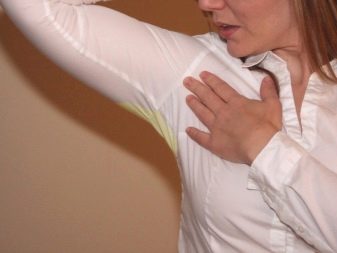

Effective remedies
Removing yellow underarm spots on white clothing is often difficult, so it is important to remove them as soon as they appear. To do this, you must use the most effective means to remove traces of sweat. Among them:
- Baking soda;
- Vinegar;
- Aspirin;
- Hydrogen peroxide;
- Laundry soap;
- Salt;
- Dishwashing liquid;
- Lemon acid.

The most common and inexpensive way is to wash the marks with soda solution... To do this, you need to mix soda and water until the consistency of sour cream. Then apply the product to the stain and rub it vigorously with a sponge or brush. This mixture must be kept on the fabric for an hour, and then washed in the usual way. Stubborn stains may need to be repeated.
Vinegar and vinegar-based solutions are the most effective and simplest way to combat sweat marks. You will need to apply a solution of 9% vinegar and water (1: 1) to the stain and wait for 10-15 minutes. Then rinse off the solution and wash the thing.
If vinegar essence is used, then it must be dissolved with water in a ratio of 1: 10, then apply to the stain. Another common and effective way to remove sweat stains from clothing is aspirin. It is used if the detergent or bleach has failed to remove the stain. Aspirin will need to be diluted with water to a creamy state and rub the mixture into the stain.Wait an hour, and then rinse off the solution and wash the thing.
You can also use an aspirin solution based on 4 tablets and 250 ml of water. When the tablets are completely dissolved in water, the solution is applied to the stain. After an hour, the item is washed under warm water.
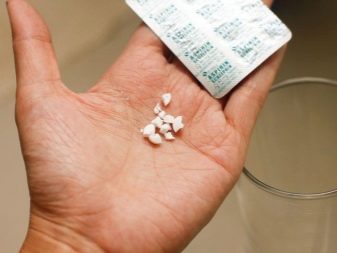
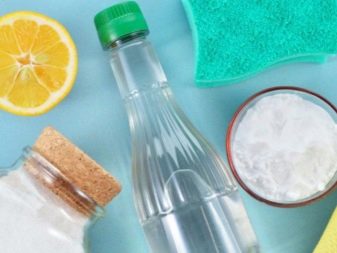
Hydrogen peroxide is most often used for fresh dirt. In this case, the chances of removing the stain are great. Before applying it, you should wet the stain with warm water, and then apply the solution. If there is a reaction in the form of hissing and the appearance of bubbles, this means that the stains are being washed off. After the reaction has died down, you can safely wash the thing in the usual way. If necessary, you can repeat the procedure several times.
But it is important to remember that prolonged contact of peroxide with the material can lead to yellowing and deterioration.
You can also wash your shirt or T-shirt in water with hydrogen peroxide added. For a liter of water, you should take 1 tbsp. l peroxide and soak clothes for 20-30 minutes. After the elapsed time, clothes are washed by hand or in a machine.
Laundry soap also effectively removes sweat stains. To do this, wash the stain with soap and leave for half an hour. Then you should wash the thing in the usual way.
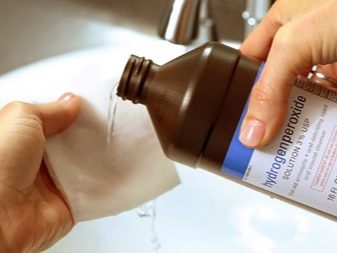
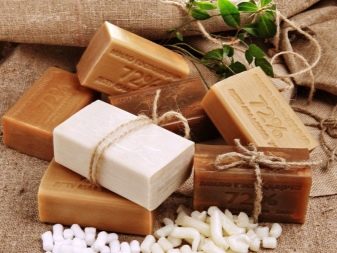
To remove stains, you can use salt alone or in combination with other substances. Typically, one salt is used for delicate fabrics. To do this, salt is dissolved in water (250 grams per 1 liter of water), and then clothes are soaked in the resulting solution for 1–2 hours. A mixture of salt and baking soda works well even on stubborn stains. To prepare it, you must mix the ingredients in equal proportions with water. Rub the resulting gruel into the stain and leave for 1-2 hours.
Modern dishwashing detergents are good help for bleach and powder. The material in the armpit area must be wetted and a dishwashing detergent must be applied. Then leave the product in the sun, and wash it off after 30-60 minutes. This method is good only in clear weather. A universal method is a solution of 2 tsp in a glass of warm water. It should be applied to the stain and wait 1–2 hours, and then wash the item in the usual way.
A quick way to get rid of sweat marks on your clothes is to apply citric acid. You will need to dilute the acid with water (1: 20) until complete dissolution and process the contamination. After two hours, the item can be washed in the usual way with the addition of powder.
When using improvised means, as well as when using bleach, it is necessary to take into account the type of fabric.
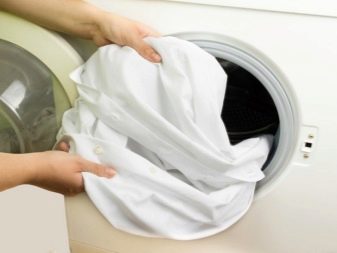
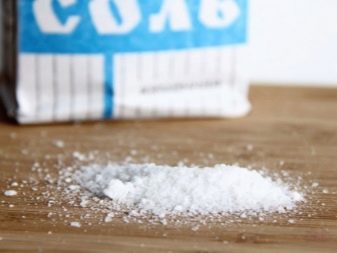
Types of fabrics and how to clean them
Each fabric requires a certain amount of care. Therefore, the removal of sweat stains from various materials should be approached carefully and a specific agent should be selected for it, since an incorrectly selected substance can harm and spoil the fabric. So, aspirin is a universal stain remover. He will be able to remove the stain from both delicate fabrics and woolen fabrics.
To remove stains from cotton items, you can use and hydrogen peroxide and wine vinegar. Peroxide can be used to remove stains on a T-shirt, shirt, blouse and jacket. You will need 20 ml of peroxide, 2 tsp. soda and detergent. The resulting mixture must be applied to the contaminated areas; for old stains, you can clean the marks with a brush and a mixture. Leave on for 1-2 hours and then rinse with warm water. After the procedures, the clothes are washed in the usual way.
To prepare a solution with wine vinegar, you will need 1 tbsp. l of the main ingredient and a glass of warm water. Apply the resulting product to stains and wait 30-40 minutes. Then rinse the item in warm water and wash as usual.
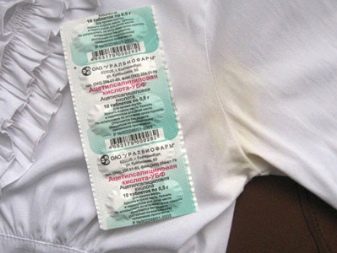

To remove stains from linen clothes, you can use a mixture of baking soda, salt and dishwashing liquid or liquid soap. All components must be taken in equal proportions and mixed thoroughly to get a thick mixture.Then it must be applied to the stain and left for 30-40 minutes. After the elapsed time, the item is erased in the usual way.
Stains from delicate fabrics - silk, synthetics, satin, can be easily washed with sodium hyposulfite, which is sold in a pharmacy or a photographic store. It will take 1 tbsp. l of this substance in a glass of warm water. This solution must be thoroughly moistened with a stain and then rinsed thoroughly.
Rubbing alcohol is also suitable for removing stains from such fabrics. You will need a small cotton pad or a piece of cotton wool dipped in alcohol to wipe the stain. Then the garment should be thoroughly rinsed in clean water.
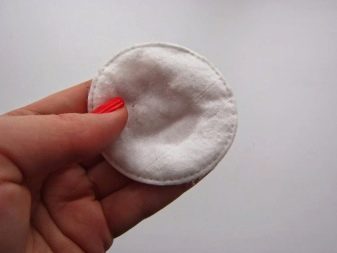

Removing stubborn stains is more challenging and will come to the rescue. a mixture of aspirin and hydrogen peroxide. This tablet equally effectively cleans the surface of both synthetic and cotton products. You will need to pre-soak the clothes for 30 minutes in soapy water, and then apply the gruel obtained from an aspirin tablet and water to the stain. The mixture should be left for 2-3 hours and then washed thoroughly. Only after these procedures can hydrogen peroxide be used. It must be diluted with water (1: 10) and the stain must be treated with a solution. After 10-20 minutes, the clothes should be washed or rinsed again.
Even with old stains it will help to cope ammonia and vinegar. Only this method is not suitable for delicate fabrics. You will need to prepare a solution of vinegar and water at the rate of 2 tbsp. l for 2 liters of water, soak clothes in it. After half an hour, take out the product and wipe the areas under the armpits with a solution of alcohol and water (1: 1). Then the clothes should be washed with the addition of detergent.
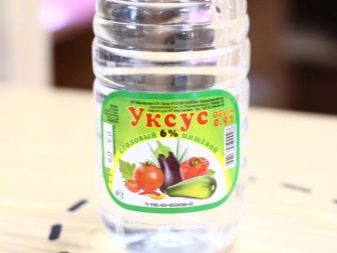
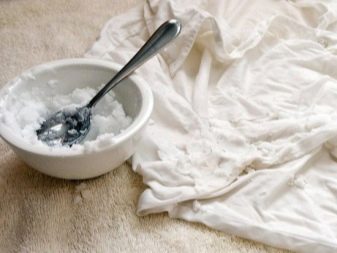
Recommendations
In order for the removal of stains to happen efficiently and quickly, you should know a few rules:
- When dry or wet cleaning, do not iron the dirty area, as the high temperature allows the dirt to penetrate even deeper into the fibers. Because of this, the washing process will take longer;
- When using hydrogen peroxide, do not keep it on the garment for a long time, as there is a possibility that all clothes will turn yellow. Because of this, you should also rinse the item thoroughly - at least 3 times. Use it with extreme care to remove stains from delicate fabrics. Before the process, it is better to check the peroxide on an inconspicuous area;
- Only apply cleaning or bleach to the wrong side of the garment. This will avoid damage to its appearance and the appearance of stains;
- Fresh sweat marks can be removed by washing with soap and water.
It is important to wash the item not in hot, but in warm water. The optimum temperature is 30-40 degrees. After washing, if conditions permit, it is better to dry clothes outside or in a well-ventilated area;
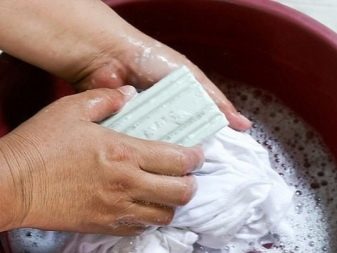

- It is better to try each new way of getting rid of stains not on the clothes themselves, but on a piece of similar matter. Such an action will allow you to avoid unpleasant situations with damage to things;
- Before removing a stain, you need to know the appropriate methods for a particular type of matter. It should be remembered that alkaline and aggressive agents are not suitable for woolen products, as well as high water temperatures. Acidic products are not suitable for synthetic and linen clothing. Delicate fabrics cannot tolerate alcohol, acetone, or a bite. Therefore, the introduction of these components into solutions should be carried out with extreme caution;
- It is not recommended to use chlorine-based substances for any type of clothing, as they can leave streaks or dark areas;
- Newly formed sweat and deodorant marks can be removed with vodka or rubbing alcohol. Synthetic items can be washed well with laundry soap.
For information on how to remove yellow underarm spots from white clothing, see the next video.








